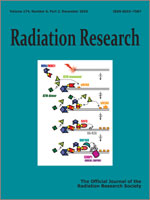Studies of Mayak workers and people who lived along the Techa River have demonstrated significant associations between low-dose-rate radiation exposure and increased solid cancer risk. It is of interest to use the long-term follow-up data from these cohorts to describe radiation effects for specific types of cancer; however, statistical variability in the site-specific risk estimates is large. The goal of this work is to describe this variability and provide Bayesian adjusted risk estimates. We assume that the site-specific estimates can be viewed as a sample from some underlying distribution and use Bayesian methods to produce adjusted excess relative risk per gray estimates in the Mayak and Techa River cohorts. The impact of the adjustment is compared to that seen in similar analyses in the atomic bomb survivors. Site-specific risk estimates in the Mayak and Techa River cohorts have large uncertainties. Unadjusted estimates vary from implausibly large decreases to large increases, with a range that greatly exceeds that found in the A-bomb survivors. The Bayesian adjustment markedly reduced the range of the site-specific estimates for the Techa River and Mayak studies. The extreme variability in the site-specific risk estimates is largely a consequence of the small number of excess cases. The adjusted estimates provide a useful perspective on variation in the actual risks. However, additional work on interpretation of the adjusted estimates, extension of the methods used in describing effect modification, and making more use of prior knowledge is needed to make these methods useful.
How to translate text using browser tools
13 September 2010
How Much Can We Say about Site-Specific Cancer Radiation Risks?
D. L. Preston,
L. Yu Krestinina,
M. E. Sokolnikov,
E. Ron,
F. G. Davis,
E. V. Ostroumova,
E. S. Gilbert
ACCESS THE FULL ARTICLE

Radiation Research
Vol. 174 • No. 6b
December 2010
Vol. 174 • No. 6b
December 2010




